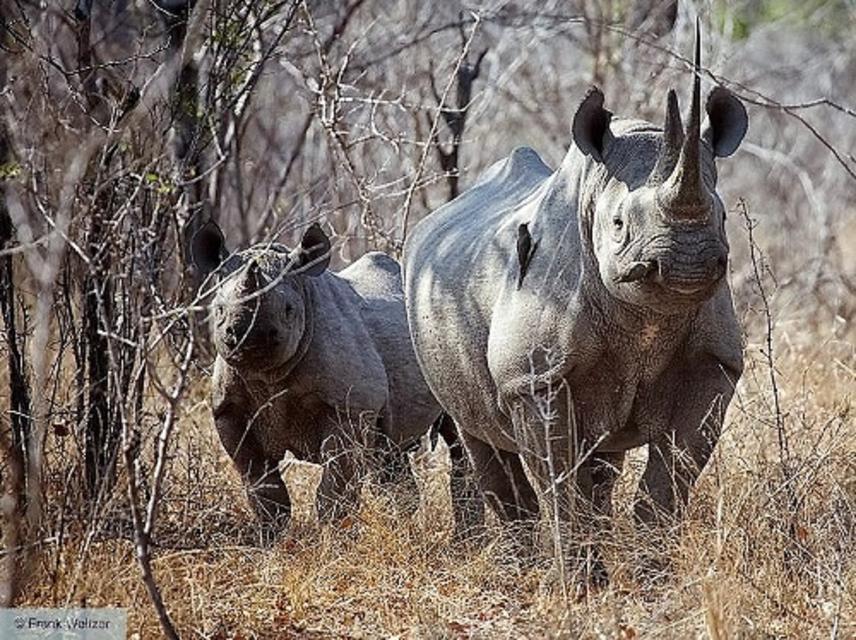Krisztián Gyöngyi
Other projects
To enhance monitoring effectiveness and better understand the habitat ecology and forage choice of black rhino in LNP so that through better capacity and science, informed decisions could generate better security and ensure long term productivity of the population.

Cow and calf.
Reintroduced in 1993, the small population of black rhinoceros (Diceros bicornis) of Malawi’s Liwonde National Park (LNP) is part of the wider Miombo-Sourveld meta-population. Upsurge in illicit poaching urges management responses to be rapid and efficient. Though having been reproducing satisfactorily, this first reintroduced population has always been considered as faring poorly in terms of meeting conservation best practice criteria: inadequate biological management [e.g. very low number of founders (6), improper sanctuary size (40km²) and intermittently functioning fence]; weak monitoring regime; low security; lack of empirical ecological research; uncertain financial capacity and tenuous institutional sustainability. To enhance genetic viability of the Liwonde stock and thus contribute to the long term evolutionary potential of the taxon, it is indispensible to better understand their habitat preferences, forage choice and identify potential challenges they face (e.g. ecological stressors).
Providing answers to pressing ecological stressors and building a professional monitoring team was defined as essential when we started. Daily tracking patrols are now set to locate and monitor condition of the rhinos as well as record general behaviour, habitat use, breeding status, conflict and possible disturbance factors. Tracking devices (VHF & satellite) are used to detect the presence of individual rhinos and collected information fed into the central data bank. GPS units allow rhino activities, live sightings and poaching dynamics to be plotted on maps so that patterns of home ranges, bull territories and unwanted human impact could be obtained.
During the dry season censor beam cameras are to be planted in frequented paths and watering points in order to better understand the nocturnal activities of black rhino. Engendering informed management decisions through evidence-based research and modern detection technology, improved security and enhanced population productivity are expected to ensue. Through increased protection and constant monitoring this evidence-based research project will contribute to calf survival, long-term genetic viability and hopefully to overall population accretion in the long term. Key lessons are expected to be fed into community-based education curricula in schools surrounding the park. Improved relationships and newly built partnerships between LNP and the communities (e.g. jobs, eco-clubs, tree nurseries, village awareness meetings), with hoisting the special Malawian black rhino on the banner, will convey strong conservation messages. Results will feed into the National Black Rhino Strategy and complement regional metapopulation objectives set by the SADC Regional Programme for Rhino Conservation.